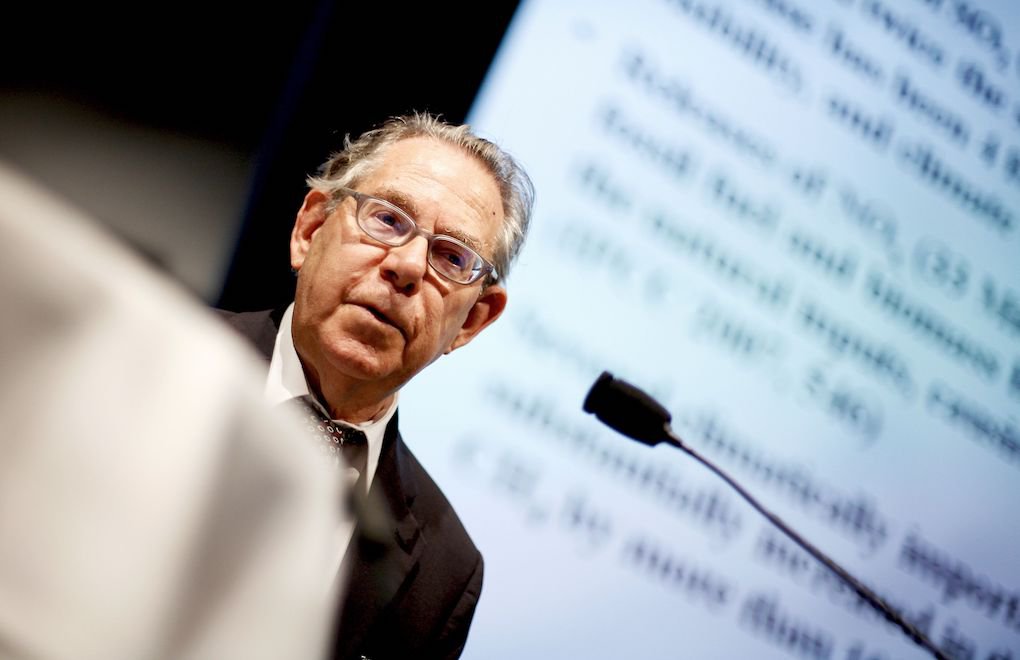Thanks to him, we learned about the depletion of the ozone layer: Who is Paul Crutzen?
Would you like to get to know the Nobel Prize-winning chemist Paul Crutzen, who revealed the threats to the ozone layer and developed the concept of "nuclear winter" and the Anthropocene era?

Crutzen's death in 2021 was announced by the Max Planck Institute for Chemistry, where he directed the atmospheric chemistry department until 2000 when he retired in 1980. Institute spokesperson Susanne Benner did not reveal the chemist's cause of death, but stated that he had been "fighting an illness for several years".
Paul Jozef Crutzen (3 December 1933 – 28 January 2021) was a Dutch meteorologist and atmospheric chemist. He was awarded the Nobel Prize in Chemistry in 1995 for his work on atmospheric chemistry and specifically for his efforts in studying the formation and decomposition of atmospheric ozone. In addition to studying the ozone layer and climate change, he popularized the term Anthropocene to describe a proposed new epoch in the Quaternary period when human actions have a drastic effect on the Earth.
Crutzen, who was being treated at a hospital in Mainz, Germany, was 87 years old when he died on January 28, 2021.
He started his career as an engineer
According to the Washington Post, Dr. Crutzen grew up in the Nazi-occupied Netherlands and initially worked as an engineer. Although he dreamed of an academic career, he enrolled in technical school and built bridges in Amsterdam to save his family from the cost of university.
When he saw a newspaper ad for a computer programming job at Stockholm College, he saw it as an opportunity, applied for it, and got the job. Soon after, he attended college classes. He has accumulated enough credits to earn a master's degree and apply for a doctorate in meteorology.
His studies
Crutzen worked on ozone depletion. His main research areas were "stratospheric and tropospheric chemistry and their effects on biogeochemical cycles and climate".
He worked as a professor in the Department of Atmospheric Chemistry at the Max Planck Institute for Chemistry in Germany, the Scripps Institution of Oceanography at the University of California, Seoul National University in South Korea, the Meteorology Department at Stockholm University, and the Georgia Institute of Technology.
Won the Nobel prize
Crutzer, who studied the relationship between humans and the atmosphere, the causes of air pollution, the effects of forest fires, the consequences of nuclear war, and the depletion of the ozone layer, won the Nobel Prize in Chemistry in 1995.
For all his achievements, Crutzer is best known for popularizing the term Anthropocene. Crutzer described his discovery to Fred Pearce, the author of the book "With Speed and Violence":
“I was at a conference when someone mentioned the Holocene, a period of relatively stable climate since the ice age. I thought this was wrong. The world had changed a lot. That's why I said: 'No, we are in the Anthropocene.' I made up that word at that moment. Everyone was shocked.”
Popularized the term "Anthropocene"
He later learned that he was not the first person to use the term Anthropocene. In the 1980s, biologist Eugene F Stoemer coined the term. Journalist Andrew Revkin previously used the word 'Anthropocene' to describe an era dominated by human influence.
However, Cutzen's speech at the conference quickly aroused significant repercussions, and since then the term began to appear in debates and geology textbooks.
